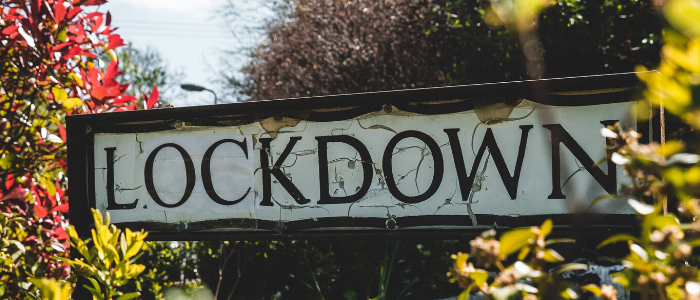You may have heard the myth that the Chinese word for crisis translates in English as “danger”, but also “opportunity”. It is a compelling idea, but it is not true: the word for crisis in Chinese translates more properly as “threat at a point of juncture”.
The world of education is now at a juncture that could lead in two directions post-lockdown. One path leading from that juncture runs back to “business as usual”. The other leads to new ideas and imperatives: what the future of education might mean after COVID-19.
The question is, which path will governments, educators and schools take?
What lessons have we learnt from the lockdown?
Firstly, students and teachers have realised how exhausting it is to be on screens all day long. Remote lessons have reminded us that powerful learning happens best when we are engaged, energetic and focussed. If we are just filling in hours, we are missing the point. Good practice during this remote learning experience has been to reduce screen time and modify the curriculum accordingly. Researchers at the University of Peking have said that “online sessions between 15 to 30 minutes are most effective” (Nin & Corcoran, 2020). This should make us reflect on how effective current models of education are where students sit in classrooms for hours upon hours with few breaks.

Second, schools have understood that this is not just remote learning – this is learning during a pandemic. Anxiety, uncertainty, fear and isolation have become more prevalent. Checking in with students to make sure that they are coping has become extremely important, as has allowing students opportunities to connect with one another in chats or videoconferences during remote lessons. Keeping up the rituals of school, with its registrations and moments of social interaction that allow students to stay in contact with their peers, is psychologically important during this crisis (UNICEF, 2020).
This begs the question of whether classroom rules in most schools take into account children’s basic social and emotional needs. If schools focus on academics only, they risk forgetting that wellness needs to come first. As a popular slogan among educators says: “we must Maslow before we Bloom” (meaning that higher order thinking will flourish as long as the learning environment is learner-centred enough to ensure security and confidence).
Thirdly, many students have been left behind because of a lack of access to appropriate bandwidth or devices, and a lack of school readiness. Meanwhile, others have been able to accelerate their digital learning through sophisticated software, access to high performing devices and highly trained teachers. This digital divide has been exacerbated by the crisis and will leave gaps in many children’s learning (Hughes, 2020). Governments, districts, and schools must make every effort to ensure that systems and infrastructure are able to cope with any future lockdowns. Access to education is already unequally distributed in the world, which is why an organisation like Cambridge Assessment International Education is so vital, making quality learning accessible to a broad range of stakeholders. However, more needs to be done across the globe by ministries of education and education endowments, such as NGOs that fund educational initiatives, if humanity is to get close to the UN’s Sustainable Development Goal on education, SDG4.
Questions to consider
Some schools that were shut are starting to re-open. The question is how the lessons learnt from the lockdown will influence the larger picture moving forward.
- If schools were prepared to modify curriculum and contact time to ensure that students were concentrated and engaged during remote learning, how will they modify curriculum, contact time and pedagogical strategies to ensure that students are concentrated and engaged in “normal” classrooms? Will there be a return to students often sitting passively while teachers lecture in front of a whiteboard, masses of homework, late nights studying for tests, and an accumulation of content that makes deep, critical, and creative thinking difficult because there is so much to “get through”? Will more time and effort be spent understanding why students become bored and saturated and will there be efforts to make sure that this is minimised?
- Anxiety, fear, and isolation are factors in the COVID-crisis, meaning that teachers have had to think more carefully about building a sense of community and human contact through remote learning. Will the return to classrooms take this lesson back with it? Will teachers spend time away from curriculum coverage to check-in with every student, to practice mindfulness, to give students opportunities to connect with each other, share their thoughts and feel confident in doing so? Will teachers consider themselves as mentors? Or will it be a return to what happens in too many classrooms: a regime of silence while the lesson goes on gravely and if a student is having a bad day or not feeling well is not really on the agenda because the focus is on content coverage?
- With most governments investing between 2-4.5% of GDP on education (OECD, 2016), many teacher salaries and professional development programmes are underfunded. Given everything economists tell us about the importance of investing in education, will there be a greater investment in this essential resource for the future? And will special attention be paid to training teachers in how to digitise their instruction effectively while ensuring learners in disadvantaged areas are given access to technology that has become essential for learning? Or will it be a return to “normal” where some sectors have state-of-the-arts resources and others do not? Of course, it will be difficult to level the playing field absolutely, but how much effort will be made to level it more?
Conclusion
The world of education is threatened, and is at a juncture. This is the meaning of the Chinese word for crisis. One path leads back to where things were before the COVID-19 crisis, a system that, by and large, has been in place for the last 200 years. The other path concentrates on much more investment in education but also on student wellness, while doing whatever can be done to ensure that learning is happening not just through test scores and output but by being more closely connected to the psychological and emotional realities of learners. Let us aim for the path of wisdom. As the ancient Chinese proverb says: The best time to plant a tree was twenty years ago. The second-best time is now. It’s not too late.
References
Hughes, C. (2020). Some implications of COVID-19 for remote learning and the future of schooling: https://unesdoc.unesco.org/ark:/48223/pf0000373229
OECD. (2016). Public spending on education. https://data.oecd.org/eduresource/public-spending-on-education.htm
Ning, A., & Corcoran, B. (2020). How China’s Schools Are Getting Through COVID-19. EdSurge. https://www.edsurge.com/news/2020-04-20-how-china-s-schools-are-getting-through-covid-19
UNICEF. (2020). How teenagers can protect their mental health during coronavirus (COVID-19). https://www.unicef.org/coronavirus/how-teenagers-can-protect-their-mental-health-during-coronavirus-covid-19





